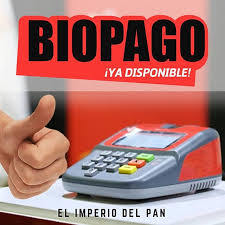Proposal to improve the Blockchain platform by minimizing energy consumption
The most recent in innovation and financial reengineering was born in 2008 with an article proposed by an unknown person, identified with the pseudonym of Satoshi Nakamoto, in which he proposes a novel methodology called "BLOCKCHAIN" for the management of information in a decentralized (distributed) way, democratic (consensual), reliable and transparent, which would offer encrypted information, in real time at a minimum cost for those involved. It consists of creating a community of interconnected nodes in the network, operating under the same algorithm and respecting the rules of the game. Each Node fulfills the same functions of custody and validation of the information, receiving a profit from the transaction commission and, in some cases, they compete with each other to obtain a special prize for exercising the additional mining function. The usefulness of the Blockchain platform is so wide that it ranges from the food, pharmaceutical, financial, identification, smart contracts, logistics, etc. The Blockchain will surely end up radically changing many processes that are vulnerable to fraud and acts of corruption. Despite its relative short life, barely 13 years, this technological innovation will be attacked and discredited by those who see its hegemony and control of information compromised.
The term "Blockchain" translates "chain of blocks", where the detailed information of each transaction is recorded, chronologically, in "txt" format files, which are then identified as blocks. Each block must comply with certain rules: the size of the file must not be greater than 1 MB. Each block contains around 2000 transactions, each transaction is identified with a reference known as HASH, then each block (txt file) is identified with a more complex HASH, whose detail contains the correlative of the preceding block; hence the blocks form an interlocking chain impossible to alter. This methodology is a true copy of the accounting record in the journal.
How the validation and demonstration of this proposal merited a large investment and a significant number of participants to create the network system made up of many NODES, Nakamoto proposed in 2009, framing the use of Blockchain in the financial context, the launch of digital money to the which he called "BITCOIN", coining the term Cryptocurrency. To attract the interest of investors, who had to make an investment in hardware and assume significant costs of electrical energy to form the nodes of the network and keep the equipment operating 24 hours a day, 365 days a year, he invented what was known as “mining” (Proff of work), in order to motivate the participants who would fulfill the role of safeguarding and validating the information derived from the transactions of the new virtual currency. The mining process is nothing more than the economic reward to be received by the representatives of the node that manages to decipher the unknown in the HASH encryption process of each block generated after complying with certain rules of the process. In other words, it is the compensation received by those who provide computing power to the network for the verification and validation of the different transactions. The broader the network system, the greater transparency and trust is generated, eliminating the risk of any fraud and cybernaut attacks that threaten the protection of information.
Of the benefits of the methodology proposed by Nakamoto, the encryption of the information is the most relevant. A Hash is a function that generates a code containing alphanumeric digits of a certain size and is the result of encrypting the information in a unidirectional way, so that once the result is obtained it is impossible to decipher the information that originated it. The Hash is used in several phases of the process in the Blockchain, from the generation of the public and private address of the “wallet” wallets, through the identification references of each transaction to the key process of generation and shielding of the creation and identification of each block.
The HASH of each block, consists of 64 digits and contains information that summarizes the detailed content of all the transactions registered in the txt file, as well as is linked to the block that precedes it, it must also meet a pre-established pattern that is announced as a challenge to the time the "file weight equivalent to 1MB" rule is met. This pattern requires that the hash contain at the beginning certain digits of zero value "0" and for this an unknown must be found located at the end of the code, which is known as a "NONCE" and whose possible mathematical solution is only achieved randomly, so the The computing power used by each NODE must be devoted to testing all possible values until the exact value is found that results in the required pattern. This process varies according to the difficulty and power of the equipment contained in each Node. According to recent statistics this "mining" process takes around 10 minutes. When the representative of a node manages to solve this puzzle, he must submit the result to the community that makes up the network, who will validate the reliability of the content of the block, which must be a true copy of the information handled by the rest of the nodes and that the HASH meets the required pattern; in such a way that with the vote of more than 51% the block is validated and the reward is assigned to the winning node. Next step, the new block begins, giving continuity to the validation process of each of the transactions that are entering the system in queue, respecting the chronological order.
Understanding that each transaction implies transferring Bitcoin from an origin to a destination, the first thing to determine is that the origin Wallet has said funds to be discounted and added to the designated destination Wallet. In the accounting methodology these records are reflected in the so-called "Ledger" in which the records and the available balance of each beneficiary are detailed; However, in the methodology proposed by Nakamoto, each time a transaction is validated a rigorous process is required that involves reviewing each block from the initial block to the last transaction of the current block to determine algebraically the balance of the origin Wallet, then then , if there is sufficient availability, the transfer is executed. For this to happen and to be validated it must have the democratic consensus of the community, that is, at least 51% must agree on the result of this validation. Nodes that show differences are discarded and audited to determine the source of the problem. This is the great advantage of the Blockchain platform, which attributes qualities of transparency and reliability to it, since it is shielded against hacker attacks for fraudulent purposes.
Bitcoin mining will only exist until the volume of Bitcoin in circulation reaches its ceiling, according to the limits established in its “birth certificate” Whitepaper. When the time comes, the Bitcoin in circulation will be limited, hence in theory this is non-inflationary money, even when recent market behavior assigns it a speculative value. When this occurs, the incentive for the Nodes to continue operating and give continuity to the ecosystem that supports the Blockchain platform will be the fees charged for each transaction, which will surely be more expensive to meet the profitability expectations required to maintain operating costs of the business.
Considering that to date the system that supports Bitcoin has generated 686.218 blocks and that to validate each one of the transactions greater computing power is required since the validation of the transaction involves reviewing each of the blocks to identify and perform the summation of the movements of the Wallet origin. Then, with the passage of time, the teams used for this purpose have to exert, more and more, a greater effort in time and performance to carry out these operations, which will imply greater energy consumption, this being one of the most important criticisms against global warming of the planet. In this sense, a proposal to remedy this weakness consists of replicating the accounting methodology applied at the end of a financial year.
It's proposed to add a new rule to the Blockchain methodology in which, after reaching a certain number of blocks, a cut must be made determining the balances of each of the Wallets contained in the preceding blocks, which must be registered in so many blocks as required to contain all the information, respecting the initial chronology in which the Wallets were registered. The Hash of each block must allocate some digits to identify the batch of each cycle cut and the accumulated correlation. From there, the validation of the following transactions will start with the review from the first block of the current batch; this will allow the information processing to be relaxed, requiring less power, extending the useful life of the equipment and optimizing energy consumption.
Antonina Modica Milo
07/06/2021



Comentarios